There are really only a few things we HAVE to do to go on living. Eating is one of them.
Though an average person also uses food for other purposes, such as pleasure, socialization, attaining a healthier life, eating is basically about survival. And in order to survive, we need to consume nutrients.
Some of you may only have a vague idea about nutrients – what they are, how we depend on them – so I’ll try to make the following part as easy to understand as possible.
Then I’ll move on to the main reason you’re here – the nutritional value of marijuana. Does cannabis contain any nutrients? Is it considered a health food? Can it be a full, standalone meal, and can it – horror of horrors – make you fat? All the answers are here, but first things first.
What are nutrients?
Nutrients are compounds that living beings need in order to function properly. Our bodies can create some nutrients, but not all of them or not enough, so we get our nutrients from food.
According to generally accepted classification, nutrients are divided into two groups, macronutrients (needed in larger quantities) and micronutrients (needed in smaller quantities).
Macronutrients:
Macronutrients from food are carbohydrates, proteins, and fats. There’s one more nutrient that we need in larger quantities, and that’s water.
Each group of macronutrients has specific and multiple roles in our body, but it suffices to know that they give us energy (mostly carbs and fat), help our tissues and muscles develop and repair (mostly protein) and help the transportation of all essential compounds (water).
Micronutrients:
Micronutrients are 13 vitamins and 16 minerals. Some examples of vitamins are vitamin A, B, C, D, E, K, and some essential minerals are iodine, sodium, potassium, etc. As I mentioned, we need them in smaller quantities, but they have an important job to assist with the creation of enzymes, hormones, and other substances that help our organism grow and function properly. Their absence can become a major threat to our health and development.
What does ‘nutritional value’ mean?
Nutritional value refers to the overall amount and quality of nutrients in a food product. The amount of each nutrient in particular food is found in a lab. Food manufacturers then use the information to present the breakup of nutritive contents on their product’s nutrition label.
Almost all packaged foods for sale in the U.S. need to have a nutrition label. There are strict rules on how this breakup of nutrients is displayed on the label, and they are regulated by the U.S. Food and Drug Administration.
Scientists and researchers have developed a formula for how much of each nutrient our bodies need on average in order to grow, develop, repair and function properly, but this formula is revisited every once in a while. For instance, the FDA has recently made some changes to the mandatory nutrition label to reflect the latest scientific evidence about which nutrients (and how much) we need for optimal health.
Most authority food and health organizations today agree that the healthiest way to eat is to follow the well-known food pyramid. There are several versions with slight variations, depending on who’s advocating it, but the main principle is to eat a variety of foods and have all nutrients represented in recommended amounts that vary in relation to a person’s age, weight and height, sex, etc.
The following breakdown of recommended daily servings applies for most people:
- 3-5 servings of vegetables,
- 2-4 servings of fruit,
- 2-3 servings of dairy
- 2-3 servings of meat, eggs, nuts
- 6-11 servings of bread, rice, pasta
This pyramid created by the Harvard School of Public Health seems particularly fitting for today’s average person.
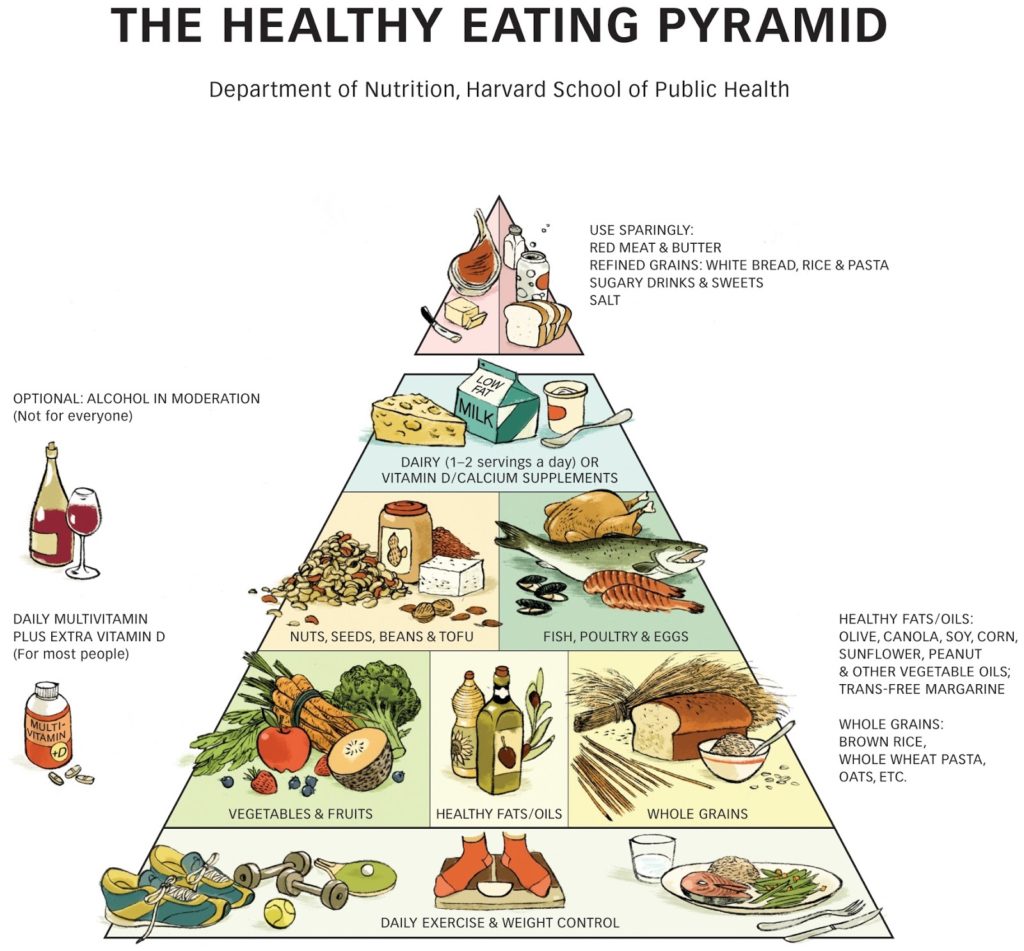
Can cannabis cover our nutritional needs?
Due to a century-long ban on marijuana use, there hasn’t been much research on how it affects our bodies. That’s why we still don’t know the exact breakdown of nutrients in a cannabis plant, but we know enough to refer to it as a superfood. Those are foods that are packed with essential nutrients, some examples being spinach, kale, raspberries, eggs, nuts, etc.
There’s no doubt that cannabis seeds have the most nutrients. In 100 grams of hemp hearts, which are cannabis seeds without the shell, there are amazing 32 grams of protein. That’s more than in meat or eggs, which are the main players in the protein foods group.
Cannabis seeds are a complete protein, which means they contain all nine amino acids that our bodies can’t make on their own.
Apart from the high amount of protein, 100 grams of cannabis seeds contain 49 grams of fat (another macronutrient), 8 grams of carbohydrates, and 4 grams of fiber. Though not an essential nutrient, fiber is really good for our bodies because it regulates our blood level and helps the bowel movements, preventing constipation.
Finally, it is loaded with micronutrients: Vitamin A, B6, folate, niacin, riboflavin, vitamin E, calcium, magnesium, phosphorous, potassium, iron, zinc, etc.
Benefits of eating hemp leaves
Though not as nutritionally amazing as seeds, hemp leaves are also a good source of nutrients. They are especially rich in fiber, as well as magnesium and calcium.
There are two types of cannabis leaves: the larger fan and smaller, upper sugar leaves.
Sugar leaves have a higher concentration of cannabinoids than fan leaves, especially the female species. For example, sugar leaves of certain female cannabis plants contain 1.8% of CBD, while its fan leaves have only 0.2% CBD.
If you’re interested in combining the effects of highly nutritious food with beneficial effects of cannabinoids, be sure to use sugar leaves for your meals.
While stems and roots contain nutrients as well, they are not consumed that much because of their not-easy-to-eat texture.
That’s why cannabis seeds and leaves are most commonly used for nutrition.
But can you use it as a standalone meal? Can cannabis make you full? Well, if something like lettuce or sunflower seeds can make you full, so can cannabis leaves/seeds. In other words, most cannabis consumers will use it as only one of the ingredients in a meal.
How to use cannabis in the kitchen?
There are two main reasons why using raw cannabis is the best when it comes to nutrition:
- The nutritional value stays intact because there is no cooking involved that may burn away some of the nutrients.
- THC in raw cannabis is still in its non-psychoactive form, THCa, so the food can be eaten without any chance of getting high.
The best ways to use raw cannabis are to sprinkle salads with marijuana seeds, add them to cereal, oatmeal, yogurt, or to use leaves to create a nutrient-dense juice or salad.
Though some nutrients and cannabinoids may be lost due to high heat, people often use weed to cook or bake tasty edibles. The most popular recipes with cannabis are those for cannabutter (which is then used for other dishes), weed brownies, cookies, candies, etc.
Cannabis-infused edibles are arguably more tasty than raw cannabis foods, but they contain less concentrated cannabis nutrients, and you can easily get high.
Another way to use cannabis for food is in dry form. Dried weed leaves are commonly used to make cannabis tea.
If you’re into cannabis for its superfood qualities, you’ll definitely benefit from consuming it.
Can you eat weed and get high?
You can most certainly get high from eating weed.
Whether you will or won’t depends, first of all, on the method of preparing your meal. If you’re using the plant in its raw form that hasn’t been decarbed (meaning, the non-psychoactive THCa hasn’t turned into psychoactive THC), then you won’t get high.
If you use cannabis for cooking or baking, getting high will depend on the amount of weed you use in your recipe.
If your goal is to get high and you use potent plants with high concentrations of THC, not only will you get high, but it will last you longer than with other methods of consuming cannabis.
That’s because digested weed impacts our organism differently that smoked/vaped weed. The digestive system converts tetrahydrocannabinol to 11-hydroxy-THC, which is a more potent version of THC, and it makes our high get a delayed start, but lasts longer and is more powerful.
Getting fat from cannabis? Everything’s possible.
If you’re worried about gaining weight, you probably know what calories are. But let’s go over it again for those lucky ones whose lives are unburdened by calories.
A calorie is a unit of food energy. It’s the energy needed to heat up a gram of water by one degree Celcius. What does that mean exactly? It just means we need this energy from calories in order to survive.
We need to intake at least 1000 calories per day to be able to normally grow, develop, move, think, heal when necessary, etc. That doesn’t apply for obese people who want to lose a lot of weight, but even their decreased intake of calories needs to be supervised by doctors.
Some types of food have a lot of calories, but no essential nutrients, and vice versa.
When it comes to calories in weed, you should steer clear from eating too many cannabis seeds. Two spoonfuls a day is just enough to get those healthy nutrients and not be at risk of gaining weight, because those two spoonfuls of seeds (20 grams) contain 111 calories.
You’re much safer with leaves, especially dry leaves or buds because they contain about a calorie per one gram.
And if you’re using weed only as an ingredient in cannabis-infused edibles, such as cookies which are full of sugar, you’ll obviously intake a lot more calories than you would with raw cannabis.
On a side note, some research suggests that using cannabis lowers insulin levels and contributes to smaller waist circumference. This is not closely connected to our topic – the nutritional value of marijuana – but it’s good to know that marijuana can help in fighting weight gain and obesity issues.
So, let’s sum it all up. Considered one of the most nutrient-packed foods, full of cannabinoids that help our immune system, and not too caloric, there’s only one thing left to do: eat it with relish and no guilty pleasure.
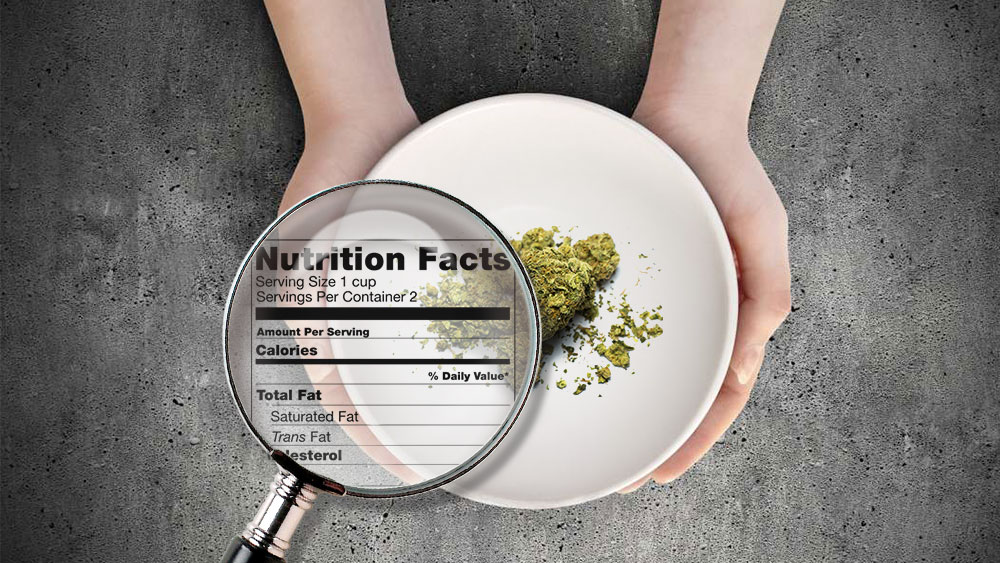



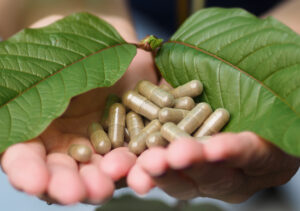
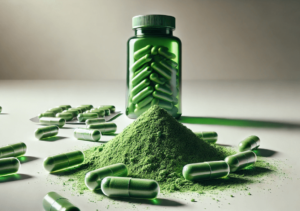
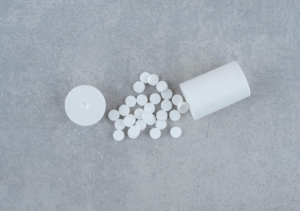
Robert September 8, 2019 at 10:33 pm
After searching the Internet I have still not found actual factual nutritional information on raw cannabis bud flowers, leaves & roots. Only the Satur hemp leaf salads have limited nutritional information as they are sold as food. So it obviously is being blocked by the powers of the criminal government bodies as it is the most nutritional plant on Earth and the only plant humans may survive on by itself.
Kat September 17, 2019 at 4:17 am
Hi Robert, Thank you so much. I find near to everything and this one is defying me. Nothing found. So grateful to read your comment as I thought wtf, how many searched do I need to make to find the answer to a simple question, ultra simple nutritional information on raw bud flowers, leaves & roots. Kat
Ron Stephen February 11, 2022 at 10:19 am
1000 calories a day??? Did you do ANY research at all? https://www.verywellfit.com/how-many-calories-to-lose-weight-3495659
Stir Leng February 16, 2020 at 9:47 am
Cannabis grown with texture and flavor in mind. Bred towards consumption. Today we can make some dabs taste like steak or taste like grapes, I'm sure we could have a sweet desert cannabis derived. Fight hunger.
Dr, AJA August 31, 2020 at 6:40 pm
It's time for People to come together March and demand that Cannabis and and all Herbs that has Criminal or illegal attach be De-criminal without any illegal connotation! The wealthy people who can afford the money to plant, purchase, manufacture, sell, use, etc, etc, so-call illegal herbs, have the right to harvest millions and Millions of Dollars, where as the poor person who can also plant, that is grow the weed and make money has been prevented by laws, rules and regulation, which is down right an infringement of one right to plant and use a natural God given Plant. People's Power is needed here. People stand-up and fight for your Right and Freedom to use, Plant and grow Cannabis.
Mona Lisa October 9, 2020 at 10:09 pm
"Legalization" in America was entirely absconded with by the greediest of each state's politicians. If cannabis patients don't legislatively demand their home-grow rights whenever the cannabis laws allow for citizen purchase power and business licensing (the corporate form of "legalization"), the road to hell will be upon them before they know it because commercial cannabis testing standards are an absolute nightmare and consumer safety is a joke! Want to get better and not just get high? You're gonna have to learn to grow at home to avoid the "accidental chemical synthesis" that binds cannabinoids to the pesticides, yet gets read out in the labs as cannabinoids ONLY. Scary, right? Medical patients MUST learn the truth and then learn to grow their own! :)
Dennis August 22, 2021 at 4:18 pm
One of the things mentioned about the cannabis plant is that marijuana plant cannabis plant. People from going to a drugstore and if you think about the amount of money made by the government off of drugs the chance of them allowing cannabis to be purchased is very rare are any of the other popular other plants by use of Fire is the only way that destroys all herbs and plants and science fire is used to change the chemical content. You're going against Criminal and governmental Drug Money lots of luck I thank you.
Antony December 30, 2021 at 2:36 pm
If a healthy life free from disease combined with strength and endurance then there is no reason to be eating dairy and meat especially occupying the top of the pyramid the way the FDA chose do. The FDA is a has a revolving door of employees from government. Its completely corrupt.
Scoobert October 19, 2022 at 6:55 pm
The FDA is the government...we are doomed as a society...ugh
Inquisitive March 24, 2022 at 3:21 am
Does the exact amount of depend on strain? What about the micronutrients values in the roots?